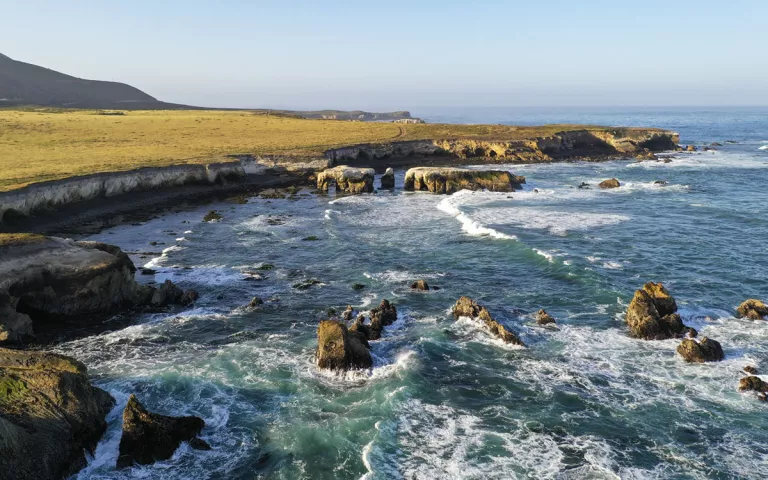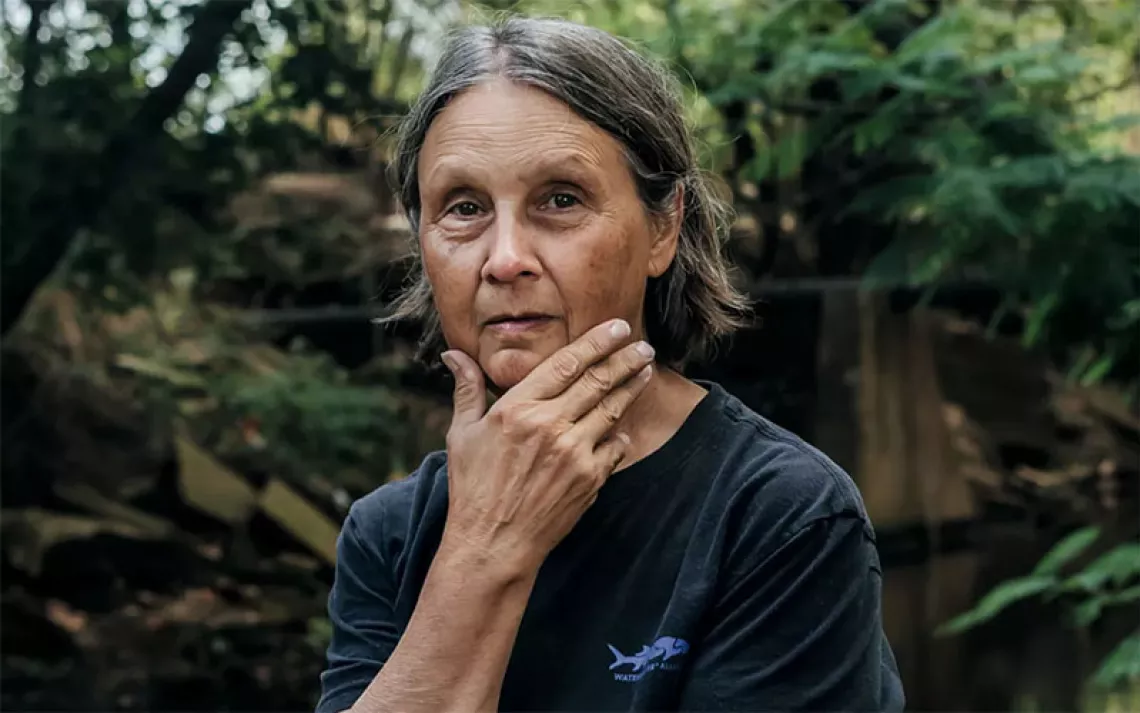Biden–Harris Administration Creates a New National Marine Sanctuary off the California Coast
The Chumash Heritage National Marine Sanctuary honors tribal input and advances ocean conservation

Northward view from Point Conception Lighthouse. | Photo by Robert Schwemmer/NOAA
The country’s first Indigenous-nominated marine sanctuary is closer than ever to being realized now that the Biden–Harris administration has finalized a management plan for the Chumash Heritage National Marine Sanctuary. The official rule designating the sanctuary, published on Wednesday, came just days after the administration said it would establish the area. When finalized, it will be the third-largest marine sanctuary in the country.
In addition to honoring California tribes, the 4,500-square-mile sanctuary protects the region's rich marine biodiversity, including 13 species of whales, several dolphin species, sea otters, and over a dozen seabird species from the threats of oil extraction and ocean mining. However, the area will continue to be open to fishing, recreation, tourism, and research. Conservation groups and the Northern Chumash Tribal Council, which has been advocating for a protected area for decades, applauded the Biden–Harris administration's progress following the news.
“I am overwhelmed with gratitude for all who have helped bring to life the vision of a Chumash Heritage National Marine Sanctuary,” Violet Sage Walker, the chairwoman of the Northern Chumash Tribal Council, said in a statement. “We are almost there, and the significance of our collective effort will make history, begin to heal centuries of wounds to our People, and bring all of us closer together.”
The National Oceanic and Atmospheric Administration (NOAA) will collaborate with the Chumash Tribes to co-steward the sanctuary. According to the plan, tribes will incorporate traditional ecological knowledge into the sanctuary's daily management by partnering with federal officials on outreach and education efforts, sharing resources and information, providing guidance on cultural and wildlife issues, and sitting on a 15-person advisory council.
The submission of the designation to the federal register office kicks off a 45-day review period by Congress and the California governor. NOAA will finalize the creation of the sanctuary by the end of the year, making this likely one of President Biden’s last conservation measures to go into effect before he leaves office. For local organizers, including the Sierra Club’s Santa Lucia Chapter and nearly half a dozen advocacy groups, protecting this section of the Pacific Ocean was long overdue.
“This announcement honors over four decades of work by Tribes and communities to protect these coastlines, habitat areas, and sacred sites,” Gianna Patchen, the Santa Lucia Chapter coordinator, said in a statement. “The Central California Coast has a rich cultural, environmental, and biodiversity legacy. The designation of the Chumash Heritage National Marine Sanctuary ensures that legacy will be preserved for generations to come.”

Proposed Chumash Heritage Nature Marine Sanctuary, from Montaña de Oro State Park. | Photo by Robert Schwemmer/NOAA
The proposed area, a slimmed-downed version of what the Northern Chumash Tribal Council had originally requested, will be a key piece of the conservation puzzle as it is situated between two existing marine sanctuaries: the Monterey Bay National Marine Sanctuary and the Channel Islands National Marine Sanctuary. Federal officials left out a huge section that would have created an unbroken chain of marine sanctuaries to maintain space for California’s nascent offshore wind industry. So far, the region’s three offshore wind developers have expressed interest in maintaining a corridor just north of the Chumash sanctuary to connect transmission lines to a power plant in Morro Bay. After the cables are solidified, NOAA may consider a phased expansion northward that would occur no later than January 2032.
This is the first federal marine sanctuary designated for conservation since 1994, when the Clinton administration created the Olympic Coast National Marine Sanctuary. However, both President Obama and President Bush created marine national monuments with the goal of wildlife preservation. In addition to focusing on ecology, the Chumash designation also preserves the maritime history of the area, where it’s estimated that roughly 200 ship and aircraft wrecks lie on the ocean floor.
Fred Collins, the chief of the Northern Chumash Tribal Council, petitioned NOAA to create the area in 2015. He passed away in 2021, the same year that NOAA started to consider a protected sanctuary. In the years following his death, his daughter, Violet Sage Walker, has carried on the fight, meeting with NOAA officials and advocating for the designation of the area.
“This is a huge moment for the Chumash People and all who have tirelessly supported our campaign over the years,” Sage Walker said in a NOAA press release. “My father, the late Chief Fred Collins, began the journey to protect these sacred waters 40 years ago, and we have been so proud to continue his work.”
Creating the Chumash Heritage National Marine Sanctuary helps fulfill President Biden’s America the Beautiful initiative, a program designed to leverage public and private support for protecting 30 percent of the country’s lands and waters by 2030. The designation also affirms the goals outlined in Secretarial Order 3403, under which the Biden–Harris administration committed to federal collaboration with tribes on land and water preservation decisions.
In addition to local tribes, California leaders, including Vice President Kamala Harris, who was a senator when she urged NOAA to designate the area in 2020, Representative Salud Carbajal, and Senator Alex Padilla also championed the designation of the marine sanctuary. On the day that NOAA announced the designation, nearly every local leader who advocated for its protection issued a statement celebrating the news.
“After years of advocacy, today’s announcement finally honors the Chumash people’s sacred waters as a National Marine Sanctuary and safeguards a vibrant and diverse Central Coast ecosystem,” Senator Padilla wrote on his website. “This sanctuary designation marks a hard-fought victory for the Chumash people, our conservation priorities, and the responsible development of offshore wind as California strives to meet its ambitious clean energy goals.”
 The Magazine of The Sierra Club
The Magazine of The Sierra Club



